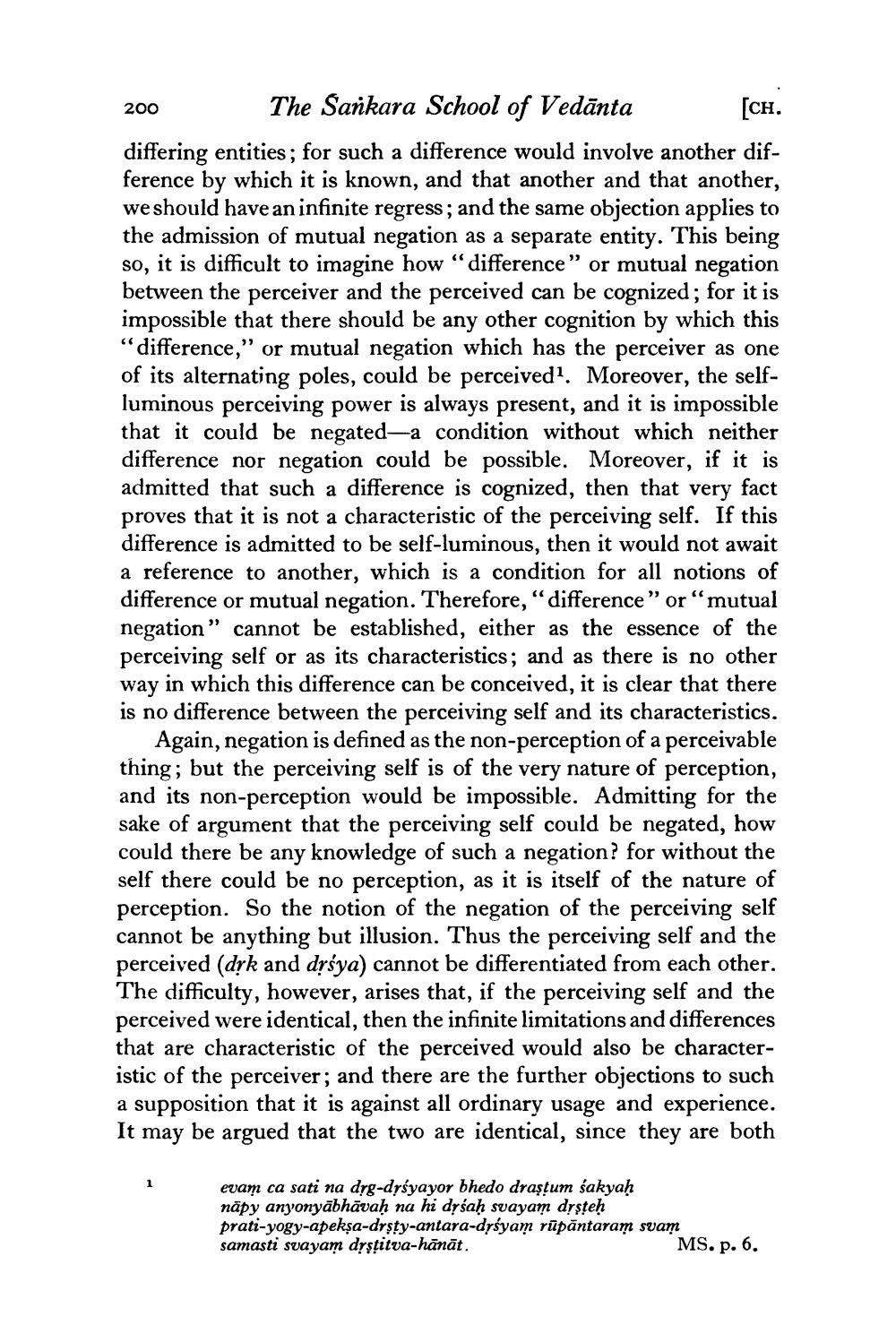________________
200
The Sankara School of Vedānta [CH. differing entities; for such a difference would involve another difference by which it is known, and that another and that another, we should have an infinite regress; and the same objection applies to the admission of mutual negation as a separate entity. This being so, it is difficult to imagine how “difference” or mutual negation between the perceiver and the perceived can be cognized; for it is impossible that there should be any other cognition by which this “difference,” or mutual negation which has the perceiver as one of its alternating poles, could be perceivedl. Moreover, the selfluminous perceiving power is always present, and it is impossible that it could be negated-a condition without which neither difference nor negation could be possible. Moreover, if it is admitted that such a difference is cognized, then that very fact proves that it is not a characteristic of the perceiving self. If this difference is admitted to be self-luminous, then it would not await a reference to another, which is a condition for all notions of difference or mutual negation. Therefore, “difference" or "mutual negation" cannot be established, either as the essence of the perceiving self or as its characteristics; and as there is no other way in which this difference can be conceived, it is clear that there is no difference between the perceiving self and its characteristics
Again, negation is defined as the non-perception of a perceivable thing; but the perceiving self is of the very nature of perception, and its non-perception would be impossible. Admitting for the sake of argument that the perceiving self could be negated, how could there be any knowledge of such a negation? for without the self there could be no perception, as it is itself of the nature of perception. So the notion of the negation of the perceiving self cannot be anything but illusion. Thus the perceiving self and the perceived (drk and drsya) cannot be differentiated from each other. The difficulty, however, arises that, if the perceiving self and the perceived were identical, then the infinite limitations and differences that are characteristic of the perceived would also be characteristic of the perceiver; and there are the further objections to such a supposition that it is against all ordinary usage and experience. It may be argued that the two are identical, since they are both
evam ca sati na drg-drśyayor bhedo draşțum sakyaḥ näpy anyonyābhāvaḥ na hi dyśaḥ svayam drsteh prati-yogy-apeksa-drsty-antara-drsyam rūpāntaram suam samasti svayam drstitva-hānāt.
MS.p. 6.




